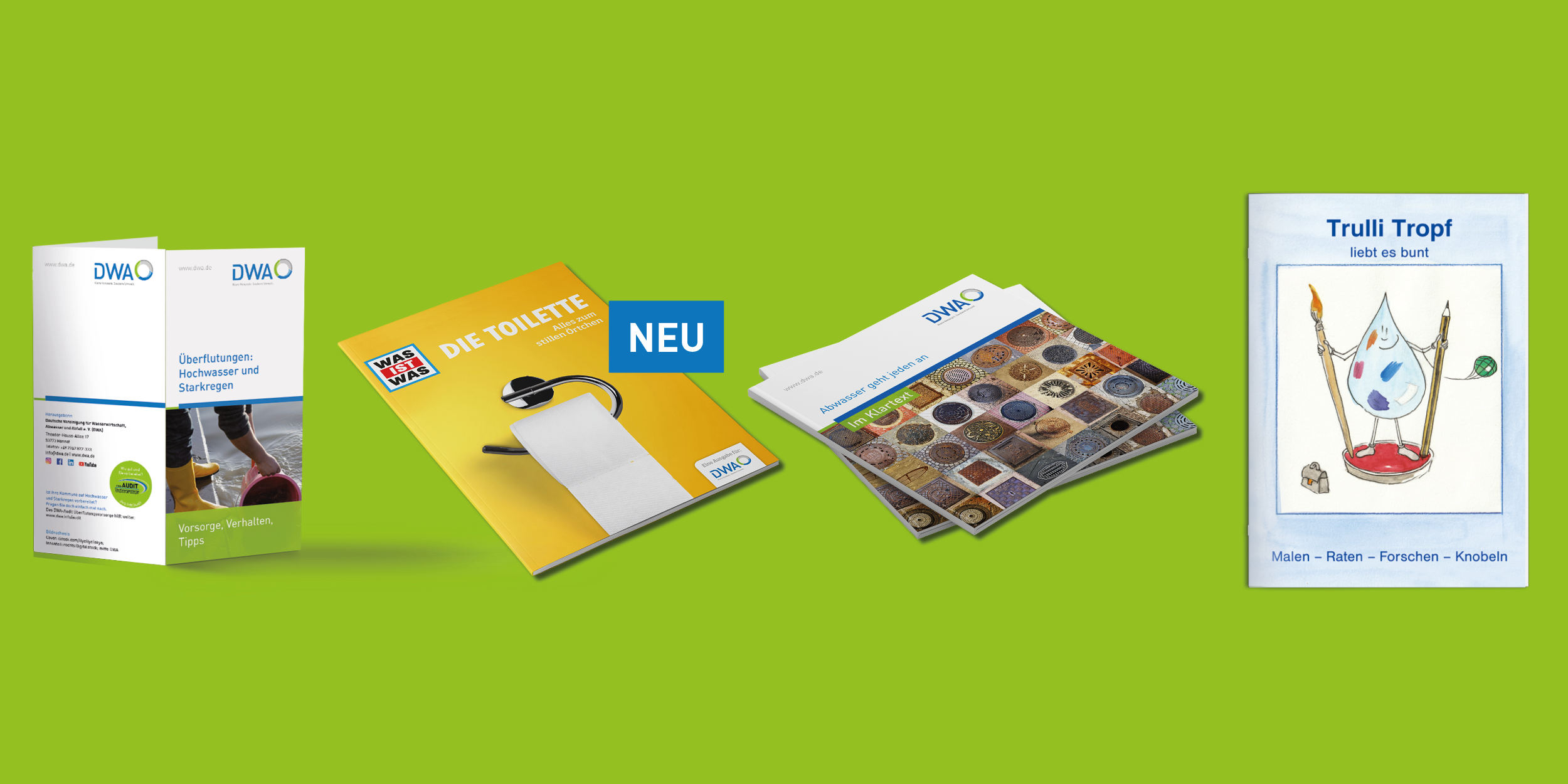DWA-A 131E - Dimensioning of Single-stage Activated Sludge Plants - June 2016 (translation May 2022)
Using the dimensioning values recommended in this Standard, the minimum requirements for municipal wastewater with single-stage activated sludge plants can be met or bettered at national level. In contrast to earlier editions, in which the dimensioning procedure for nitrifying and denitrifying activated sludge plants was based on the measured BOD5 load, the design is now based exclusively on the COD load.
72,00 €*
57,60 €* für förd. Mitglieder
57,60 €* für förd. Mitglieder
Activated Sludge Expert with Aeration
The combined version includes both the calculation to DWA-A 131 (June 2016) for the design and recalculation of single-stage activated sludge plants as well as additionally the design and recalculation of pressurized aeration systems according to DWA-M 229-1.
580,00 €*
464,00 €* für förd. Mitglieder
464,00 €* für förd. Mitglieder
Guideline DWA-M 277 - Information on design of systems for the treatment and reuse of greywater and greywater partial flows - October 2017
The present Guideline provides information and assistance for the planning, design, construction, operation and maintenance of greywater treatment and reuse systems for different applications.
54,00 €*
43,20 €* für förd. Mitglieder
43,20 €* für förd. Mitglieder
DWA-Topics - Non-Potable Water Reuse - Development, Technologies and International Framework for Agricultural, Urban and Industrial Uses - June 2019
This report is intended to provide general guidance for water utilities, consulting engineers and regulatory agencies for planning and expanding non-potable water reuse as an alternative freshwater supply, in particular for agricultural irrigation, urban landscape irrigation and other urban uses, and industrial practices.
55,00 €*
44,00 €* für förd. Mitglieder
44,00 €* für förd. Mitglieder
DWA-Topics T4/2016 - Design of wastewater treatment plants in hot and cold climates (EXPOVAL) - corrected version May 2019
The design of wastewater and sludge treatment plants under deviating wastewater and climatic conditions in other countries requires an amendment of existing design rules compliant to the DWA Set of Rules, which have been primarily developed for Central European conditions. This concerns, for example, the consideration of high or low wastewater temperatures, increased salt content or special discharge requirements.
73,50 €*
58,80 €* für förd. Mitglieder
58,80 €* für förd. Mitglieder
Standard DWA-A 262 - Principles for Dimensioning, Construction and Operation of Wastewater Treatment Plants with Planted and Unplanted Filters for Treatment of Domestic and Municipal Wastewater - November 2017
This Standard sets out a common basis for the design, construction, and operation of planted and unplanted filters for biological treatment of municipal wastewater. Wastewater treatment with planted and unplanted filters is characterized by a simple structural design, a simple mode of operation, a low production of biomass and secondary sludge, a low use of external energy, and a high treatment efficiency, even for treatment systems with a small number of sewer connections.
93,50 €*
74,80 €* für förd. Mitglieder
74,80 €* für förd. Mitglieder
Standard DWA-A 216E - Energy Check and Energy Analysis - Instruments to Optimise the Energy Usage of Wastewater Systems - December 2015
This Standard introduces the energy check and energy analysis as instruments for energy optimisation of wastewater systems and formulates requirements for their execution. The scope of application covers wastewater treatment plants and wastewater collecting.
93,00 €*
74,40 €* für förd. Mitglieder
74,40 €* für förd. Mitglieder
New Alternative Sanitation Systems (2016)
New Alternative Sanitation Systems - NASS - Terminology, Material Flows, Tratment of Partial Flows, Utilisation - 1st edition 2016
68,00 €*
68,00 €* für förd. Mitglieder
68,00 €* für förd. Mitglieder
Guideline DWA-M 366E - Mechanical Dewatering of Sewage Sludge - February 2013
This Guideline summarises commonly used systems as well as their dewatering efficiency and cost effectiveness. Furthermore, it presents information on operational requirements and conditions, particularly in regard to the conditioning process required prior to mechanical dewatering.
72,50 €*
58,00 €* für förd. Mitglieder
58,00 €* für förd. Mitglieder
Guideline DWA-M 386E - Thermal Treatment of Sewage Slugde - Mono-Incineration - December 2011
For planners and operators of mono-incineration plants, this Advisory Guideline shall supply a basis for the determination about concepts during the planning phase and for decisions on Investments for the construction of new plants. This Advisory Guideline also supplies important information for machinery manufacturers and plant engineers.
74,50 €*
59,60 €* für förd. Mitglieder
59,60 €* für förd. Mitglieder
Guideline DWA-M 387E- Thermal Treatment of Sewage Sludge - Co-Incineration in Power Plants - May 2012
The objective of the Advisory Guideline DWA-M 387 is to give fundamental information for the technical realisation and operation of plants for the co-incineration of sewage sludges in coal power plants.
61,00 €*
48,80 €* für förd. Mitglieder
48,80 €* für förd. Mitglieder
Standard DWA-A 272E - Principles for the Planning and Implementation of New Alternative Sanitation Systems (NASS) - June 2014
In addition to the basic principles and the system design of New Alternative Sanitation Systems (NASS), this Standard presents in particular the specific characteristics, which, compared to conventional systems, are to be considered during conception, planning, construction and operation. By a description of the essential aspects and the approach to comparative evaluation of different concepts, including NASS, the effects of the chosen systems on all relevant protection goals and criteria can be considered comprehensively.
51,00 €*
40,80 €* für förd. Mitglieder
40,80 €* für förd. Mitglieder
DWA-A 199-1E - Service and Operating Instructions for the Personnel of Wastewater Systems - Part 1: Service Instructions for the Personnel of Wastewater Systems - November 2011; check 2017 approved by experts
Operators of wastewater facilities shall establish service and operating instructions tailored to their respective circumstances in order to adhere to the requirements especially of § 57 of the German Water Resources Management Law (WHG) and in order to meet the minimum requirements of the self-inspection or self-monitoring ordinances of Germany's federal states.
47,01 €*
37,60 €* für förd. Mitglieder
37,60 €* für förd. Mitglieder
Practical Guideline Operational Problems in Wastewater Treatment Plants - Handbook for the operation of wastewater treatment plants
The publication entitled ‘Operational Problems in Wastewater Treatment Plants – A Handbook for the Operation of Wastewater Treatment Plants’ offers a practice guideline for troubleshooting operational deterioration in wastewater treatment plants.
59,00 €*
47,20 €* für förd. Mitglieder
47,20 €* für förd. Mitglieder
Guideline DWA-M 381E - Sewage Sludge Thickening - October 2007
In 1998 the former ATV Sub-Committee 3.2 presented the working report "Thickening of Sewage Sludge". The various procedures and their efficiency and cost-effectiveness have been updated and are now presented in this Advisory Leaflet.
46,00 €*
36,80 €* für förd. Mitglieder
36,80 €* für förd. Mitglieder


















